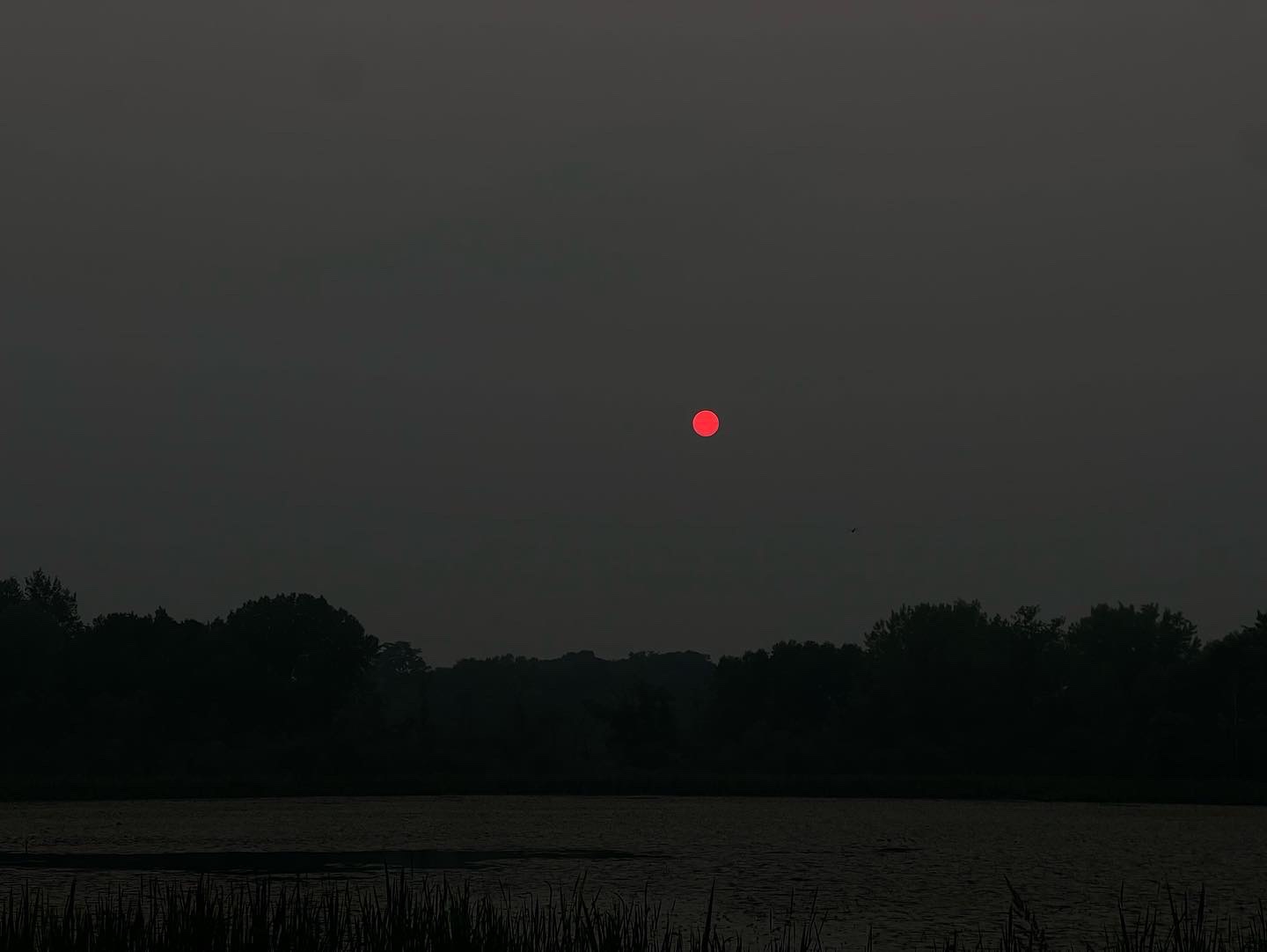A crimson photo voltaic suspended in a matte of smoky gray. It’s an ominous sight, charming, to say the least. Do you have to’ve ever puzzled regarding the science behind the purple photo voltaic all through wildfires, you’re truly not alone.
Two days up to now, on my evening drive residence from Alexandria, MN, one factor excellent caught my consideration. I gazed out of my vehicle window, transfixed by a purple photo voltaic. It hung like a warning above the horizon, casting its ethereal glow all through a serene lake adorned with lily pads.

Mesmerizing as a result of it was, it carried a deeper significance—a brand of chaos and faraway destruction. It served as a distress title, a reminder of the devastating wildfires raging in Canada whose smoke was filling the skies all through the Northern US. The sight, whereas otherworldly, seemingly magical, will probably be outlined by the very same fascinating physics that give us our blue skies on a peaceful summer season afternoon.
The Dance of Delicate and Smoke
To know why smoke from distant wildfires tinges the photo voltaic with a crimson hue, we must always first uncover the intricate interplay between delicate and our ambiance on any common day. Daylight encompasses a spectrum of colors, each composed of varied wavelengths. It’s a marvel to consider that inside a single beam of seen delicate, every coloration of the rainbow resides, with its private distinctive frequency. Various surfaces soak up or mirror delicate in distinct strategies, revealing the colorful array of colors. Prisms, as an illustration, manipulate delicate by bending it, allowing each frequency to separate and switch into seen—a course of that moreover underlies the phenomenon of rainbows. Do you have to’re desperate to be taught additional about this matter, I explored it extensively in a submit quite a lot of months up to now regarding the illusion of coloration.
Particles throughout the Spotlight
Whereas nearly invisible to our naked eyes, the skies are filled with particles. When daylight encounters these particles, it scatters, inflicting the blue and inexperienced wavelengths to disperse in quite a few directions. This scattering phenomenon, known as Rayleigh Scattering, is accountable for the attractive blue skies we marvel at all through daytime.

Sunsets, on the entire, exude a fiery look, intensified after evening storms or when clouds cloak the horizon. As a result of the photo voltaic descends within the path of the horizon, its delicate traverses a bigger distance and encounters a thicker portion of the Earth’s ambiance, altering the spectacle we witness. All through this journey, the shorter wavelengths of sunshine have already been filtered out, leaving solely the amber-hued, longer wavelengths. When combined with smoke, this influence turns into way more pronounced.

Wildfire smoke accommodates an assortment of minuscule particles, along with ash, soot, and completely different pure matter. Collectively known as aerosols, these particles disperse all by means of the ambiance, interacting with daylight in fascinating strategies. As daylight pierces through the smoky veil, among the many smoke particles have the ability to absorb delicate whereas others scatter it. This means the blue and inexperienced delicate is basically filtered out, abandoning an enthralling palette of crimson and amber tones.
Elements Influencing the Depth
The are quite a lot of elements that have an effect on the depth of the redness all through a wildfire sunset.
The main target and composition of the smoke particles, the proximity of the fireside to your location, and the prevailing local weather circumstances all play pivotal roles. Areas nearer to the wildfire provide, the place the main target of particles is highest, will the truth is see in all probability probably the most exaggerated outcomes. The place of the photo voltaic throughout the sky moreover performs a process. When immediately overhead at midday, you’ll potential perceive the photo voltaic rather a lot as you typically would—white scorching with an aura of yellow. Even nonetheless, the particles throughout the sky act as a filter, diffusing the sunshine and diminishing its depth. That’s why once you look immediately at it (which you proceed to shouldn’t, by the easiest way), you see the photo voltaic a lot much less as a fire throughout the sky and further as a spherical spotlight from above.
